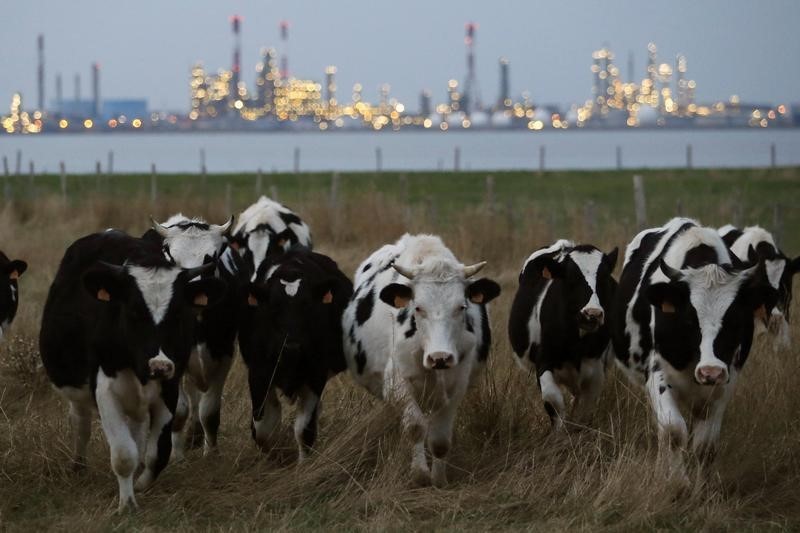* Herd clawing back from 63-year low
* Early spring fires up home barbecue grills
* Full feedlot recovery may take years
By Theopolis Waters
CHICAGO, March 22 (Reuters) - Cheaper feed and more cattle
should help stem losses for U.S. feedlots this year, livestock
analysts say, keeping beef supplies flowing just as demand
starts to pick up.
That should translate into lower prices for hamburgers and
steaks for consumers, as it could help keep feedlots in
operation and avoid costly bottlenecks in beef production.
Feedlots, which fatten up cattle ahead of slaughter, have
suffered through 15 straight months of red ink. Soaring prices
for the 600-900 pound calves they take in and sliding bids from
packers, whose beef faced tough price competition from other
meats, squeezed margins.
But now there are faint signs of a turnaround.
In February, feedlots on average reduced losses to $218 per
head - a sharp improvement from the $500 losses in December, as
estimated by Colorado-based Livestock Marketing Information
Center (LMIC).
How much longer feedyards can withstand prolonged losses
depends on an operation's size and focus, along with the ability
to be flexible about using different sources of feed, experts
said. Other strategies for coping include using futures and
options for hedging, or dipping into profit from earlier times
to survive the rough patches.
Some feedlots have been forced to close, as reflected in
the U.S. Department of Agriculture's revised figures that showed
2015 feedlot totals at 27,189, down from 28,127 in 2014 and
29,090 the year before.
BETTER TIMES AHEAD
At present, the cost of calves for feedlots is falling as
farmers build up the U.S. herd, which hit a 63-year low in 2014
because of a drought that shriveled crops. By Jan. 1, the U.S.
cattle population was at a five-year high of 92 million.
During the month of February, the number of animals put into
feedyards was the highest for that month in eight years,
according to U.S. government figures released last Friday.
Earlier this month, meat processor Cargill Foods CARGIL.UL
said it was betting on bigger supplies to reduce retail costs
when it bought a ground beef processing plant.
With herd rebuilding well under way, "the increased supply
should benefit our customers and consumers over the next few
years," Cargill said in early March.
At the same time, prices for cattle ready for slaughter have
rebounded to around $139 per hundredweight (cwt) from around
$117 late last year, when supplies were facing burdensome
amounts of meat and dwindling demand as the traditional barbecue
season ended.
With slaughter cattle prices up from lows and the potential
for more increases as Americans dust off grills for spring
barbecuing, there could be a turnaround in feedlot returns,
Texas A&M University economist David Anderson said.
Craig Uden, who co-owns a feedlot in Nebraska, has been
fattening cattle for nearly 35 years and considers this one of
the roughest periods for feedlots he has seen. It will require
years, not months, to recover, he said.
"It will be a long process because this is pretty severe.
I'm in it for the long haul."
(Editing by Matthew Lewis)
